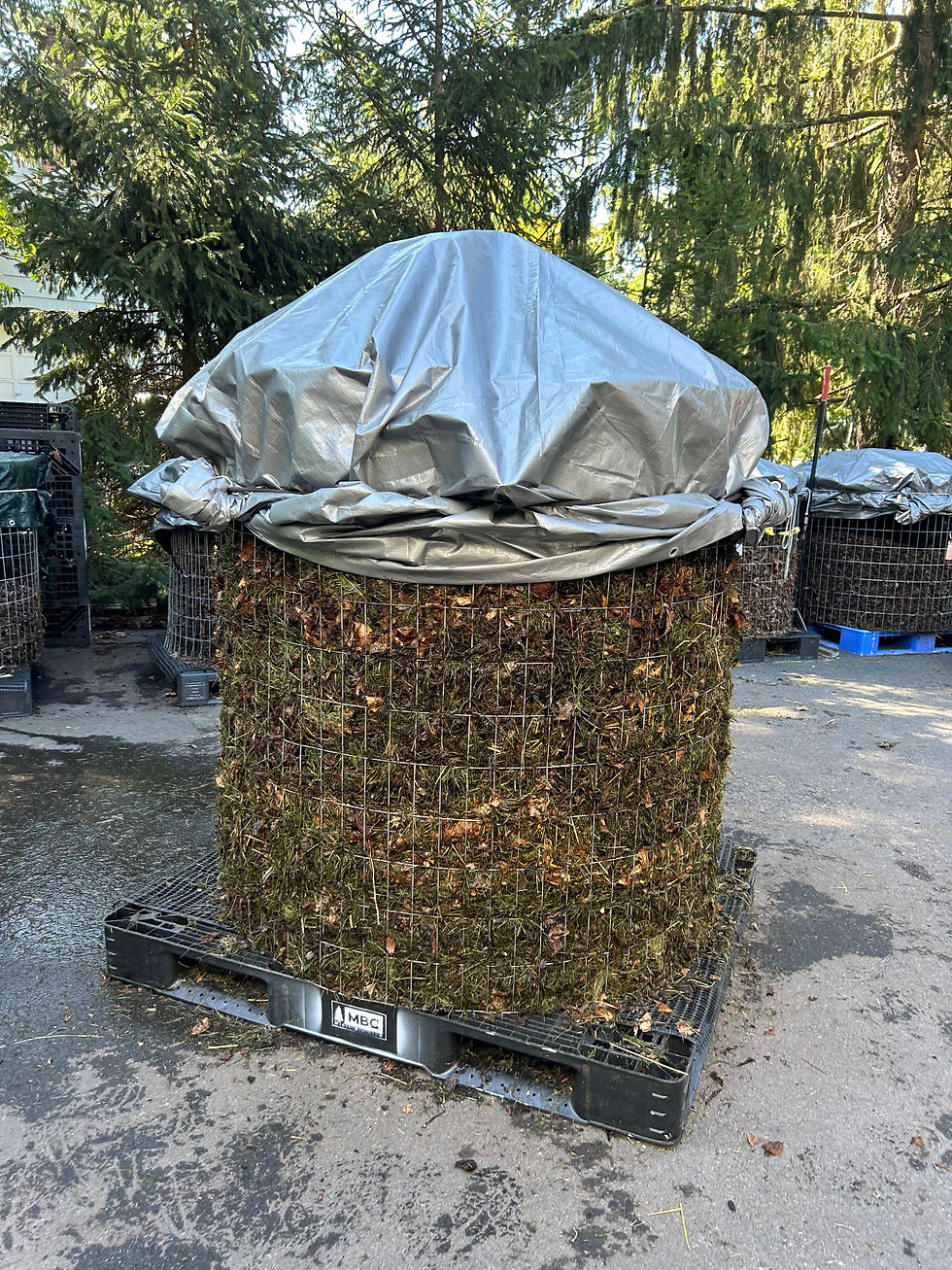Composting is nature's way of recycling, turning organic matter into nutrient-rich soil. However beneath the seemingly simple act of tossing material into a heap lies a complex dance of temperature, moisture, and microbes. In this blog post, we'll delve into the critical interplay of these factors during composting and explore why monitoring them is key to producing black gold for your garden.

The Thermophilic Symphony
A compost pile is a living ecosystem with its own rhythm and phases, much like a symphony. Temperature plays the leading role in this orchestration:
1. **Activation (40-60°C):** As your pile forms, it starts at ambient temperature. In this initial phase, mesophilic bacteria dominate, breaking down easy-to-decompose materials. The temperature rises moderately.
2. **Thermophilic Phase (60-70°C+):** Enter the virtuosos of composting—the thermophilic bacteria. During this phase, temperatures soar, killing weed seeds and pathogens. The pile becomes a cauldron of microbial activity and transformation, lasting weeks to months.
3. **Cooling Phase (40-60°C):** As the readily available materials diminish, the pile cools down. Mesophilic bacteria return, further breaking down the compost. The symphony gradually quiets.

Moisture Content: The Supporting Rhythm
Moisture content provides the rhythm to this composting symphony:
1. **Too Dry (Below 40%):** A dry pile is like a silent orchestra. Without adequate moisture, microbial activity slows, and the pile fails to heat up. Water is essential for metabolism and nutrient transport.
2. **Optimal (40-60%):** The sweet spot, where the composting crescendo reaches its peak. This range ensures efficient decomposition and a thriving microbial community.
3. **Too Wet (Above 60%):** An overly wet pile is like a chaotic cacophony. It leads to anaerobic conditions, bad odors, and nutrient loss. Excess moisture displaces oxygen.
The Composting Conductor
The conductor of this composting symphony is the diligent composter or at MBG the Lead Pile Engineer. Monitoring temperature and moisture is akin to reading the musical score. Regular checks with a compost thermometer and the "squeeze test" to assess moisture levels are essential.
Microbial Enchantment: Microscope Scanning
Compost is not just decomposed organic matter; it's a bustling microbial community. To ensure your pile is biologically growing beneficial microbial populations, maintain periodic microscope scans and analysis of compost material. This allows you to assess microbial diversity, potency and overall health of the material and ensure the compost is teeming with life.
Why It Matters

1. **Pathogen and Weed Seed Destruction:** Proper temperature and moisture levels ensure compost is safe for your garden, killing harmful pathogens and weed seeds.
2. **Efficiency and Speed:** A well-managed pile heats up faster and decomposes organic matter efficiently, producing nutrient-rich compost sooner.
3. **Nutrient Preservation:** Proper moisture levels prevent nutrient leaching, preserving valuable elements that nourish your plants.
Cultivating Composting Mastery
Composting is both an art and a science, where temperature, moisture, and microbes dance in harmony. As you embark on your composting journey, embrace the role of conductor. Regularly monitor the composting conditions, and don't forget to peek under the microscope to ensure your compost is biologically thriving. With practice and a little patience, you'll craft not just compost but a masterpiece for your garden's health and vitality.








Comentários